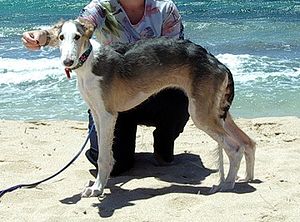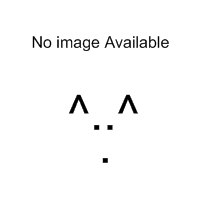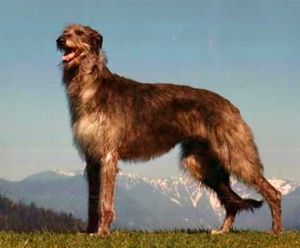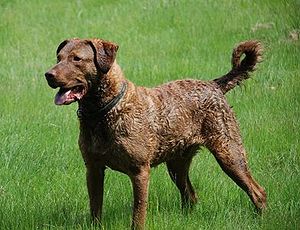 |
| Vital Statistics: |
| Place of Origin: Russia |
| Group: Sighthound |
| Height: males 28 in. min., females 26 in. min. |
| Weight: males 75-105 lbs., females 55-85 lbs. |
| Life span: 10-12 yrs. |
| Trainability: moderate |
| Good with children: with gentle children, supervise due to size |
| Good with other pets: yes with dogs, may chase other pets |
What is the origin of the Borzoi?
This sight hound’s ancestors are the same as those of the Saluki and Afghan hound. These dogs were unable to withstand the severe northern winters. When crossed with a Russian collie type dog, resistance to the cold weather was introduced. Russian nobles kept packs of Borzois to hunt wolves. In 1842 the Russian Czar presented Queen Victoria of Great Britain with a gift of a Borzoi. In 1889 Borzois were introduced in America.
What does the Borzoi look like?
Borzois are 26 inches tall minium and weigh 55-105 lbs. Heads are long and narrow with a black nose. Their backs are gently arched. Ears are small and fine and carried back. Eyes are almond-shaped and dark. The tail is carried low in a saber curve. The coat is long and silky, wavy or with large curls and a heavy neck mane. Colors are all white, shades of tan or grey, some with black markings. Regular brushing will keep the coat neat.
What is the temperament of the Borzoi?
Borzois are usually calm but can be obstinate. Early obedience training and socialization with a firm, positive hand is recommended. They are intelligent, but will not respond to harsh treatment. Borzois should be supervised around children as they don’t like rough handling. They are hunters and may view small animals as prey unless socialized very early. Borzois need long daily walks on a leash. They should only be let off-leash for a run in a very secure area. They can adapt to living in an apartment if given enough exercise.
What is the Borzoi used for?
Some can learn to compete in obedience and agility trials. The Borzoi does well in hunting and lure coursing. More and more the elegant Borzoi is looked upon as a companion dog.
Possible Health Issues
Bloat, hip and elbow dysplasia, osteochondritis dissecans, progressive retinal atrophy, sensitivity to anesthesia.



